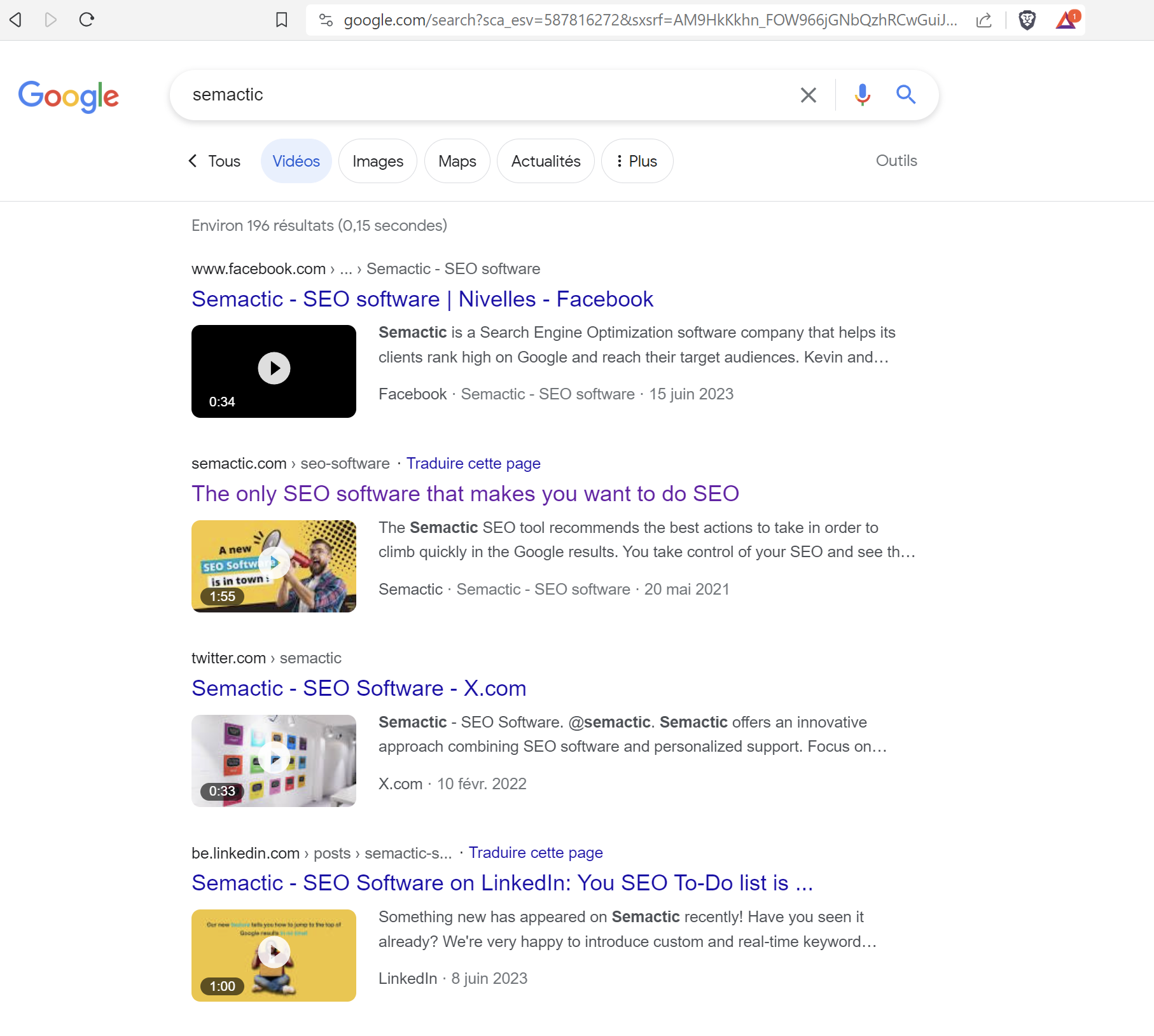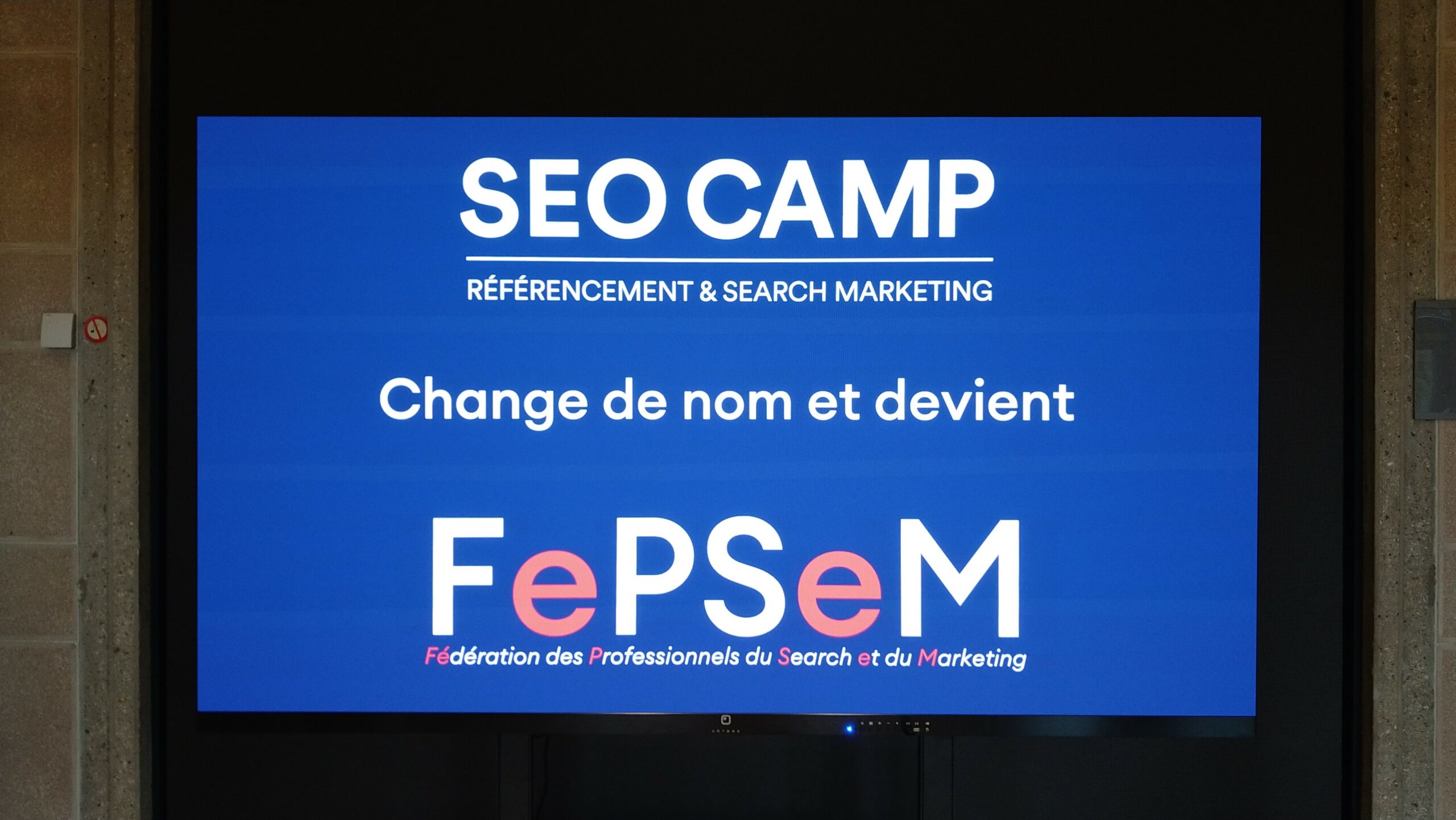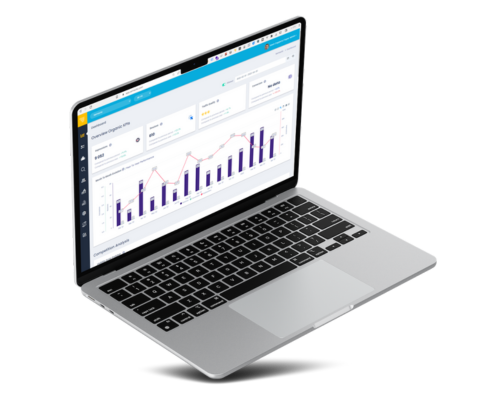Are you embarking on an SEO project for your business? You will find a plethora of resources to know the good practices of SEO. That’s the theory. But in practice, it is during the implementation that things get difficult most of the time. We reveal the 5 most common SEO mistakes observed among our clients. So that you don’t do the same.
1) Block your indexing with a Noindex tag :
First of all, what is the ” Noindex ” in SEO? The Noindex is an instruction that aims to inform search engine robots that the page containing this directive should not be indexed.


It can be used legitimately for several reasons:
- Pages PDF
- Pages affected by duplicate content
- Pages lacking content
- Pages that are useless for referencing (“My account”,…)
But it happens regularly (really!) that an entire site is put in ” Noindex “This is literally telling Google: “Please, go away and don’t index my site”. How is this possible? The typical case is a site redesign. Developers work on a “Noindex” version so that the content under construction is not referenced, but once the site is finished, it can happen that this tag is not removed….With disastrous consequences!
2) Position yourself on keywords that are too generic or on the wrong search intent:
The SEO mistake par excellence: targeting terms that are too broad or whose search intent (user intent) does not match the proposed content.
The idea is appealing: you have identified a series of keywords around 10,000 or 20,000 monthly searches. The promise of high traffic on the site. But 1) is it realistic and 2) Is it relevant to position yourself on these terms?
- By focusing on content and keywords that are too generic, it will be more difficult to get a good positioning in search engines because a content that is too broad is often a very competitive content, that is to say that many websites are related to it and are optimized for this theme. And even if you were able to position yourself on these generic terms, what would you get out of it?
- These highly searched keywords can generate traffic but will not necessarily bring back internet users really interested in your business. You can also totally miss your target by positioning yourself on the wrong search intentions.
What is erroneous search intent?
Here is a concrete example:
Imagine a site that sells decorative items made in France. The term “French decoration” could, at first sight, seem interesting to aim at. But if you take a look at the SERP (Search Engine Result Page), you’ll soon realize that the search intent is not the right one.
When an Internet user types “French decoration” in Google, it is to get information on military or honorary decorations awarded by the French government. … The chances of this website to rank on this keyword are almost nil, and even if it did, it would probably gain nothing, except a low click-through rate and a nice bounce rate.
Long tail keywords, containing at least three words, are much more targeted. They generate less traffic because they are less searched for, but they allow us to better understand the state of mind of the Internet user and thus respond more effectively to his request. By targeting this type of keywords, you opt for a referencing more oriented conversion – in the broad sense – than pure traffic.
3) Neglect your international tagging
A classic SEO error is the misuse, or non-use, of the hreflang tag. Although international markup looks simple, it is one of the most error-prone areas of SEO.
What is international tagging?
These are generally Hreflang attributes. If you have an international presence and a website in several languages, it is essential to understand how this attribute works. It helps Google to determine the geographical and linguistic positioning of your site so that it can propose the appropriate regional URL to the user when he/she requests it.


What are the risks associated with misusing the hreflang tag?
The first risk is to present a page in the wrong language to the user. We can imagine that he will be reluctant to click on this link.
There is also an indirect risk – even if it is debated among SEO experts: the risk of being “demoted” by Google because of the low success of the page. We talk about pogosticking: after having made a search, the user clicks on a result. If Google does not deliver the page in the right language, the user will leave the page directly, so the bounce rate will be higher. When coming back in the SERP, he will certainly click on another result.
Google is constantly analyzing user behavior to determine the relevance of its results. It can decide to stop presenting your site (or demote it) if many signals show user dissatisfaction.
In case your site offers a different version for 2 countries with a similar language, if you don’t use the Hreflang tag correctly, Google could consider your content as duplicated content. For example, this can happen if you have a page in British English intended for the UK, and you also have this page in American English, intended for the US, and you don’t use the hreflang tag properly. A reminder of the best practices for implementing your hreflang tags:
- Choose only one implementation method (XML sitemap, HTTP header or HTML header)
- Index the original page and each of its variants
- Make sure that each of the pages mentioned have no http errors and are accessible by robots
- Use the right language/country codes
- Set up an x-default hreflang
- Use bidirectional hreflang attribute references
- Make sure that the canonical URL matches the one specified in the hreflang tag
4) Play hide and seek with bots:
There are several ways to waste the time of Google’s robots:
The redirection chain:
What is the redirection chain?
This is when there are multiple redirects between the base URL and the destination URL. For example, URL A redirects to URL B, and URL B redirects to URL C. These redirections are called “hops”.


What is the risk of the redirect chain?
First of all, it slows down the page loading time and negatively impacts the user experience (taken into account by Google through its “Core Web Vitals” criteria). Then, the robots will take more time to find the final content and this will slow down the indexation. We also see that they may have difficulty interpreting these multiple redirections. If a double redirect is not usually a problem, accumulating 3 or more is one of the SEO mistakes that could cost you dearly.
404 error:
What is it?
A 404 error is an error code returned by a web server when it cannot find a page or it is unavailable. This often happens in the case of web pages that do not exist or no longer exist. 404 errors are frequent and stop the user’s navigation with the appearance of a “404 File Not Found” error message.


What is the risk of 404 errors?
Google’s goal is to provide relevant content. It does not want to index error pages. Beyond the consequence for this 404 page, it can also affect your whole site if the search engine detects too many errors during its navigation. The consequences will be even greater if the pages concerned have a strong internal link. Page links that link to a 404 will be broken, and if your 404 pages contained links to other pages on your site, they will lose popularity.
You should also know that even if these 404 pages are not indexed by Google, they are still crawled and you risk wasting your Crawl Budget.
The 404 error can also have an indirect negative impact on your positioning because of the bad user experience it creates. Indeed, the user will waste his time, will be frustrated and dissatisfied, and will thus leave the page directly. As explained above, this seo error increases the bounce rate which is analyzed by Google to judge the results (and therefore the sites) to present in its SERP.
The best solution to limit the negative impact of your 404 errors is to redirect your problematic URLs to valid pages on your site. If you want to de-index an erroneous page altogether, you can change them to error 410 to inform the search engines that the page has been removed. If you want to limit the negative impact, you can also redirect the URL to another page on your site.
5) Lack of clarity:
The title, crucial to the success (or failure) of your page
It is said that 80% of people only read the title of your page, without clicking or reading its content. We have not been able to verify this statistic but one thing is sure: your title is the window of your page; people must want to go there. Optimizing your “titles” is therefore essential to bring traffic to your page.
But what are the reasons that can lead to the failure of your title? Here are some classic mistakes:
- A title that does not include the main keyword
- A title that exceeds 75 characters and is therefore cut off in the SERP before it can arouse interest (with the exception of certain cases where this can actually arouse the curiosity of the visitor)
- Conversely, a title that does not reveal any benefit to the visitor because it is too short (less than 40 characters) or too general
- A title that is too complicated; use simple and direct language. When relevant, don’t hesitate to challenge the user with action terms or a question
Several themes per page
Addressing several topics in the same page or blog post can have a negative impact on your SEO. Indeed, it will be more difficult for Google to understand the subject and its context, and to know on which terms to position you.
To create quality content valued by search engines, avoid spreading yourself too thin. Cover only one topic per page and make sure to cover the topic thoroughly. Write as naturally as possible while staying focused on your main keyword. You can use groups of main and secondary keywords and (a)buser of synonyms. The content must always satisfy the user’s search intent. In this way, Google will be better able to understand your subject and propose it to the user in order to best answer his request.
In brief:
You know what you have to do if you want to miss your SEO. Apply these 5 SEO mistakes to the letter and you should drop quickly in Google results!
(PS: on the contrary, if you want to boost your SEO and avoid these classic SEO mistakes,
ask us for advice !)











